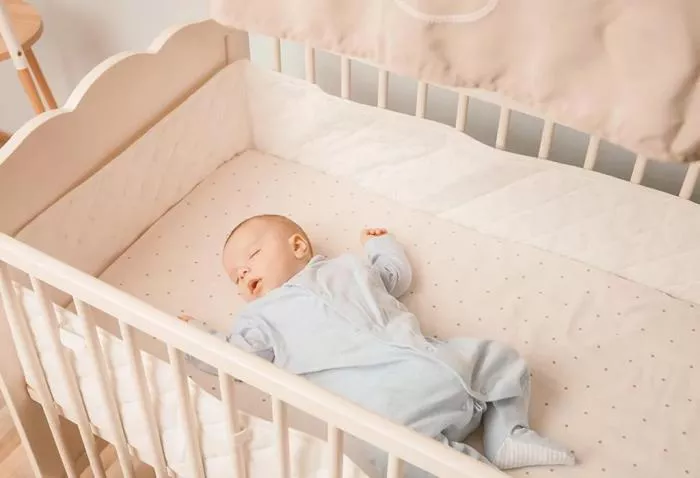Cot bumpers are often used in baby cribs to create a softer environment. Many parents believe they protect infants from bumping their heads against the crib slats. However, there is increasing concern about their safety. In recent years, velcro cot bumpers have become popular because they are easy to attach and adjust. But are velcro cot bumpers safe for your baby? This article explores the potential risks, benefits, and guidelines for using velcro cot bumpers.
What Are Velcro Cot Bumpers?
Velcro cot bumpers are padded strips designed to line the inside of a crib. They are attached with velcro straps instead of ties or hooks. Parents use them to create a barrier between the baby and the hard crib slats. The velcro makes them easy to remove and clean, which is an advantage over traditional bumpers. They come in different materials, thicknesses, and designs.
Why Do Parents Use Cot Bumpers?
Many parents believe cot bumpers provide several benefits:
Prevent Bumps and Bruises: They think bumpers protect babies from hitting their heads against the crib sides.
Avoid Stuck Limbs: Bumpers are thought to stop babies’ arms and legs from getting trapped between the slats.
Decorative Purpose: Some parents use bumpers to make the crib look more appealing.
While these reasons may seem valid, safety experts have raised concerns about the actual benefits versus the risks.
The Safety Concerns
Risk of Suffocation
One of the biggest dangers associated with cot bumpers, including velcro ones, is the risk of suffocation. Babies may roll into the bumper and have difficulty breathing. Newborns, especially, lack the motor skills to move their heads away if they end up face-first against the padding. The soft material can block their airway, leading to suffocation.
Strangulation Hazard
Even though velcro bumpers do not have long ties, the straps themselves can pose a strangulation risk. If the velcro comes loose, the baby might become entangled in the material. Loose fabric in the crib is always a hazard for infants.
Overheating
Bumpers, especially padded ones, can reduce airflow in the crib. This can cause the baby to overheat, increasing the risk of Sudden Infant Death Syndrome (SIDS). Babies regulate their body temperature differently than adults, and overheating is a known factor linked to SIDS.
False Sense of Security
Parents might feel more secure using bumpers, thinking their baby is safe. This false sense of security can lead to reduced vigilance. In reality, bumpers might introduce more risks than they prevent. Babies’ limbs getting stuck between crib slats rarely causes serious injury, and the minor bumps can be less harmful than potential suffocation.
Guidelines from Safety Organizations
Leading health and safety organizations advise against using any type of cot bumpers.
American Academy of Pediatrics (AAP): The AAP recommends against using crib bumpers of any kind, including velcro versions. They emphasize that a bare crib is the safest environment for a baby.
UK’s National Health Service (NHS): The NHS also advises against using bumpers due to the associated risks of suffocation and entanglement.
Consumer Product Safety Commission (CPSC): In the United States, some states have banned the sale of crib bumpers. The CPSC warns parents about the dangers they pose.
Alternatives to Cot Bumpers
If you are concerned about your baby’s safety and comfort, consider these safer alternatives:
Sleep Sacks
Sleep sacks keep babies warm without the need for blankets or bumpers. They are wearable blankets that reduce the risk of suffocation and entanglement.
Mesh Liners
Some parents use breathable mesh liners instead of padded bumpers. These allow better airflow and reduce the risk of suffocation. However, some experts caution that even mesh liners can pose risks if they come loose.
Proper Crib Design
Ensure the crib meets current safety standards. The slats should be no more than 2 3/8 inches apart. This prevents a baby’s head from getting stuck between them.
Positioning Your Baby Correctly
Always place your baby on their back to sleep. This is the safest position and reduces the risk of SIDS. Avoid placing pillows, blankets, or toys in the crib, as these can also pose suffocation risks.
Real-Life Cases and Studies
Several studies and real-life cases highlight the dangers of crib bumpers.
- A 2007 study found that between 1985 and 2005, 27 infant deaths were linked directly to crib bumpers. The causes were either suffocation or strangulation.
- In 2021, the U.S. passed legislation aimed at banning crib bumpers nationwide after multiple reports of infant deaths.
These cases underline the importance of following expert guidelines and keeping the crib free of unnecessary items.
Parental Concerns and Misconceptions
Many parents worry about their baby getting hurt without bumpers. It is natural to want to protect your child. However, the perceived benefits do not outweigh the risks. Minor bumps or bruises are less dangerous than the risk of suffocation or strangulation. Babies also develop motor skills by moving around in the crib, which is essential for their growth.
Conclusion: Are Velcro Cot Bumpers Worth the Risk?
Velcro cot bumpers may seem like a convenient and protective solution. However, the potential dangers far outweigh the benefits. The risks of suffocation, strangulation, and overheating are significant. Health experts universally advise against using cot bumpers of any kind.
The safest environment for your baby is a bare crib with a firm mattress and a fitted sheet. Avoid placing any soft objects, bumpers, or loose bedding in the crib. While it may feel counterintuitive, letting go of bumpers is one of the best ways to protect your baby. Prioritize safety over aesthetics or perceived comfort.
As a parent, staying informed and following expert guidelines can give you peace of mind. Your baby’s safety is always the most important factor.
Related topics:


